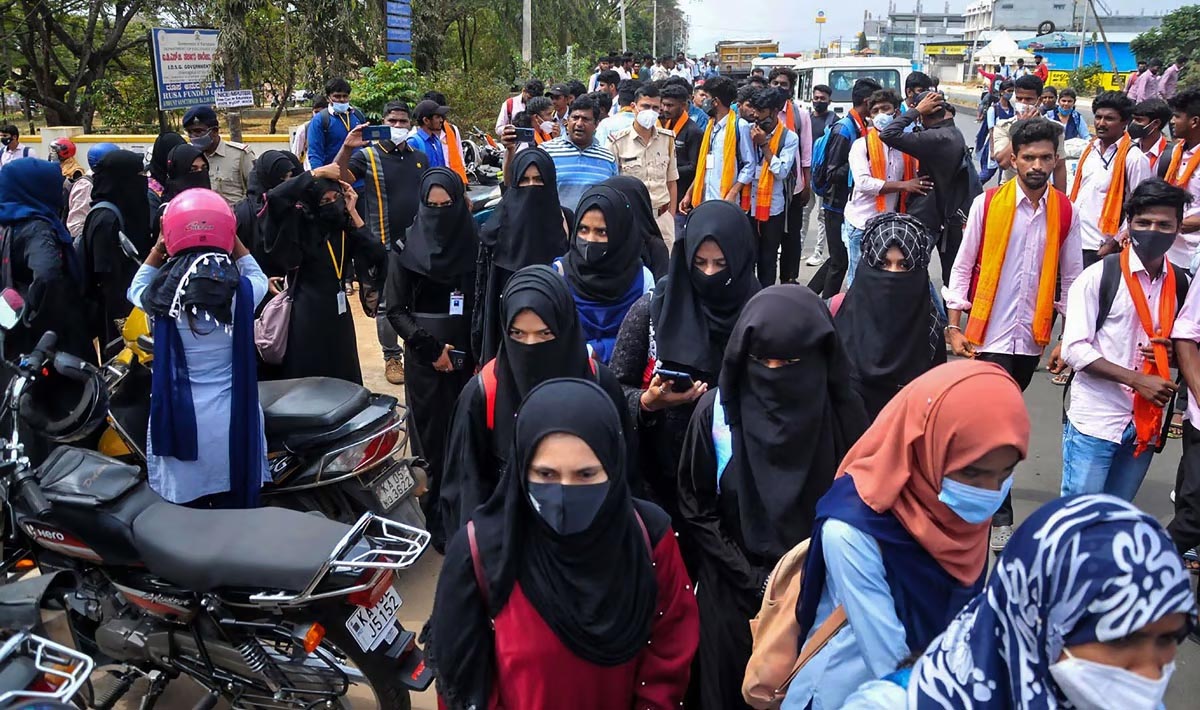On November 14, under the guise of combating malpractices including utilising Bluetooth devices to cheat on recruitment examinations, the Karnataka Examination Authority (KEA) published new guidelines that outlaw head covering of any kind in exams for boards and corporations. On October 22, Karnataka higher education minister M.C. Sudhakar had declared that hijab-wearing candidates will be allowed to appear for recruitment examinations conducted by the Karnataka Examinations Authority (KEA).
As per the guidelines issued by the KEA, “any garment or cap that covers head, mouth, or ears” will be prohibited in the exam room. According to a report by the Statesman, the order states that this is a part of the effort to stop exam malpractices utilizing Bluetooth devices. The notification containing the guideline state that “In order to prevent the use of Bluetooth devices in the examination room, the wearing of hats or any other clothing on the head is prohibited.” This has been widely reported in the media including The Hindu
The aforementioned announcement was made by the government exam body prior to the upcoming state-wide exams of various boards and corporations, scheduled to be held on November 18 and 19. The notice by the exam body is as follows:
However, the KEA has allowed mangalsutras, worn by married Hindu women, and toe rings following protests by right-wing organisations. As per the rough translation of the notification, it has been provided that “Women candidates are prohibited from wearing any kind of metal jewellery (except Mangalsutra and Kalungura).”
It is pertinent to note that though the new guidelines on the dress code specifically did not mention hijab in the list of banned items, the rules against head covers will automatically bar it during the recruitment exams.
This move by the KEA came after hijabs had been allowed by the exam body during the recruitment exams held in October. On October 22, Karnataka higher education minister M.C. Sudhakar had declared that hijab-wearing candidates will be allowed to appear for recruitment examinations conducted by the Karnataka Examinations Authority (KEA). It had been further emphasised by Sudhakar that any restriction imposed on attire would amount to an infringement of the rights of individuals. The KEA exams will be held on October 28 and 29 to fill vacancies in five government-run corporations. The said decision had also seen protests by Hindutva groups.
Notably, the hijab clad women were required to be present at the exam centres early for a thorough check, following which they were allowed into the halls.
Reacting to the reinforcement of the ban on head covers, National Conference leader Omar Abdullah urged Congress leaders Mallikarjun Kharge and Rahul Gandhi to work on revoking the said prohibition. Expressing his displeasure at such steps being taken by the Congress government, Abdullah said “Why should the government interfere in this? And such orders are passed through which Muslims are targeted. When all this used to happen in Karnataka earlier, it would not surprise us because there was the BJP government at that time. But it is sad that during Congress’ tenure, such decisions are taken. It is very unfortunate,” as provided by Rediff.com.
The current guidelines issued by the exam body makes it clear that the issue of hijab ban in Karnataka is nowhere near to being cleared and sorted. The issue had started when the Government PU College in Udupi had allegedly forbade six female students wearing hijab from entering, sparking the hijab controversy in January 2022. The girls had then staged a protest outside the college since they had been turned away. It remains unclear as to why the decision to allow women wearing hijab have been backtracked suddenly when reasonable condition of women arriving to exam centres early and being subjected to thorough checking were levied.
Related:
It is a matter of choice, nothing more nothing less: Justice Sudhanshu Dhulia in Hijab Ban case
Justice Hemant Gupta’s take on secularism, fraternity and uniformity in the Hijab Ban case

